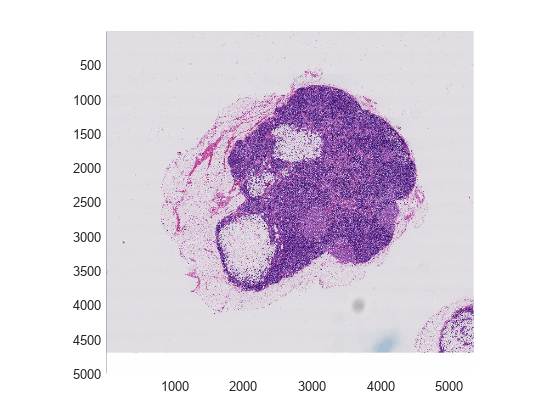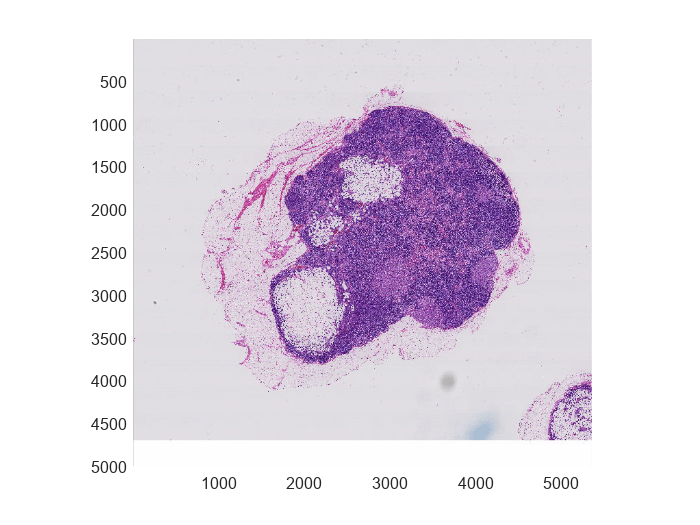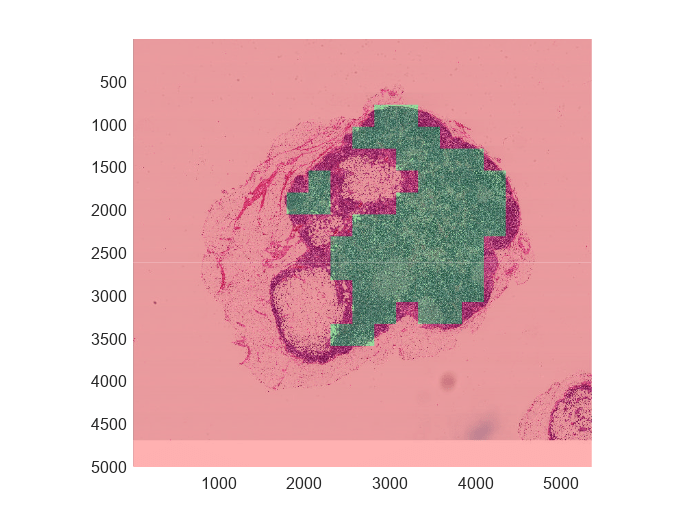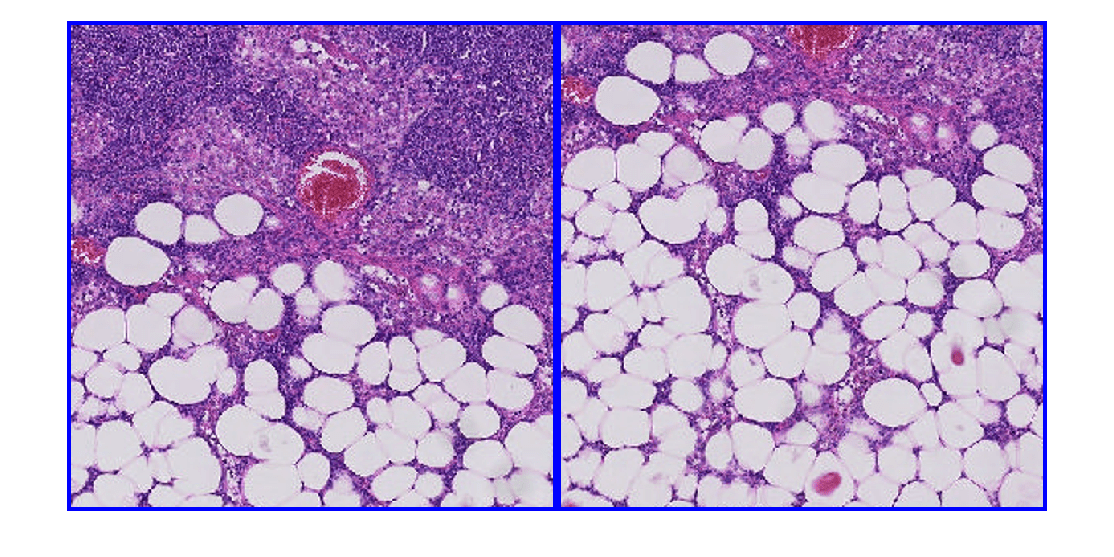bigimageDatastore
(To be removed) Datastore to manage blocks of bigimage
data
The bigimageDatastore object will be removed in a future release. Use the
blockedImageDatastore object instead. For more information, see Version History.
Description
A bigimageDatastore object manages a collection of image blocks
that belong to one or more bigimage objects. A
bigimageDatastore is analogous to an imageDatastore, which
manages a collection of unrelated images.
Creation
Syntax
Description
Create Datastore that Reads Blocks Over Entire Image
bigds = bigimageDatastore(images) creates a datastore that
manages a collection of image blocks at the finest resolution level of one or more
bigimage objects, Images.
bigds = bigimageDatastore(images,levels,
also uses name-value pairs to set one or more Properties except for
Name,Value)BlockLocationSet. You can specify multiple name-value pairs.
Enclose each property name in quotes.
Example: bigimageDatastore(bigimg,3,"BlockSize",[128
128],"IncompleteBlocks","pad") creates a datastore that reads blocks of size
128-by-128 at resolution level 3 from big image bigimg and zero-pads
partial edge blocks.
Create Datastore that Reads Blocks at Specified Locations
bigds = bigimageDatastore(images,"BlockLocationSet",blockLocationSet)
creates a datastore that reads blocks from bigimage objects,
Images, using the
resolution level, block size, and block positions specified by BlockLocationSet.
bigds = bigimageDatastore(images,"BlockLocationSet",blockLocationSet,
also uses name-value arguments to set one or more of the Name=Value)BorderSize, IncompleteBlocks,
PadMethod, and ReadSize properties. You
can specify multiple name-value arguments. Enclose each property name in quotes.
Example: bigimageDatastore(bigimg,"BlockLocationSet",bls,"ReadSize",4)
creates a datastore that reads four blocks at a time from big images
bigimg according to the position, block size, and resolution level
specified by bls.
Properties
Object Functions
combine | Combine data from multiple datastores |
countEachLabel | (To be removed) Count number of pixel labels for each class of
bigimageDatastore object |
hasdata | Determine if data is available to read |
numpartitions | Number of datastore partitions |
partition | (To be removed) Partition bigimageDatastore |
preview | Preview subset of data in datastore |
read | (To be removed) Read data from bigimageDatastore |
readRelative | (To be removed) Read neighboring block from bigimageDatastore
using relative position |
reset | Reset datastore to initial state |
shuffle | Shuffle data in datastore |
transform | Transform datastore |
isPartitionable | Determine whether datastore is partitionable |
isShuffleable | Determine whether datastore is shuffleable |
Examples
References
[1]









